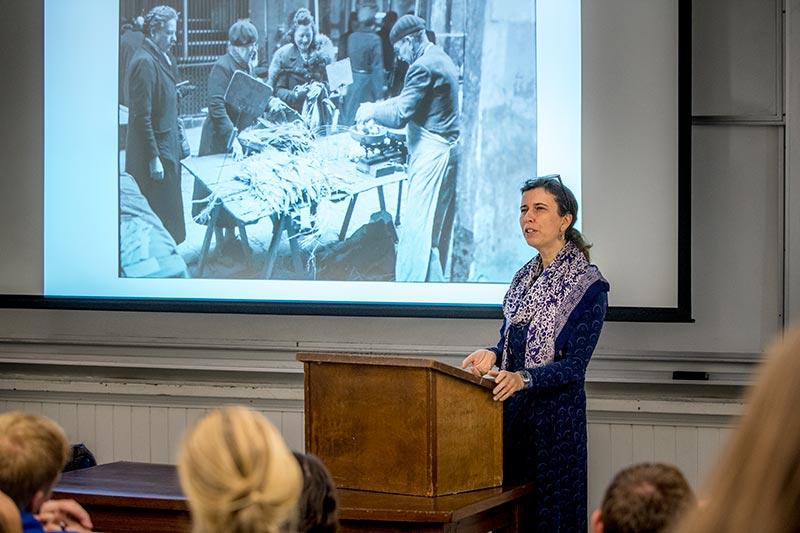Students dig into the history of eating and drinking
The Tulane University Department of History has cooked up a unique approach for exploring the past in a new course called the History of Eating and Drinking.
“The way we eat has ties to a specific time and place,” said Jana Lipman, associate professor of history. “We want students to be excited about history and approach something they do daily in a new way.”
Focusing on the topics of labor and industrial food production, Lipman discussed the modern-day chicken industry during her unit and incorporated readings from Upton Sinclair’s literary classic The Jungle and a trip to the Southern Food and Beverage Museum.
“The way we eat has ties to a specific time and place.”
— Jana Lipman, associate professor of history
“We wanted to make (the course) about the action of eating and drinking and how one can historicize those actions,” said Kris Lane, France Vinton Scholes Chair in Colonial Latin American History. “It also acts as an introduction to the professors in the history department, and each one involved in the course comes with their own regional specialty.”
During his week teaching the course, Lane led a discussion on the world’s consumption of corn, covering topics ranging from the origins of maize in Mexico to present-day production of feed corn.
Justin Wolfe, associate professor of history, also paired his discussion of the cultivation of chocolate in the Americas with a sweet taste test.
“The chocolate drink we served is called ‘1579’ and came from a New Orleans-based company called Acalli Chocolate. The mix is based on a 16th-century recipe from Guatemala that mixes chocolate, achiote (an aromatic spice) and cinnamon,” said Wolfe.

